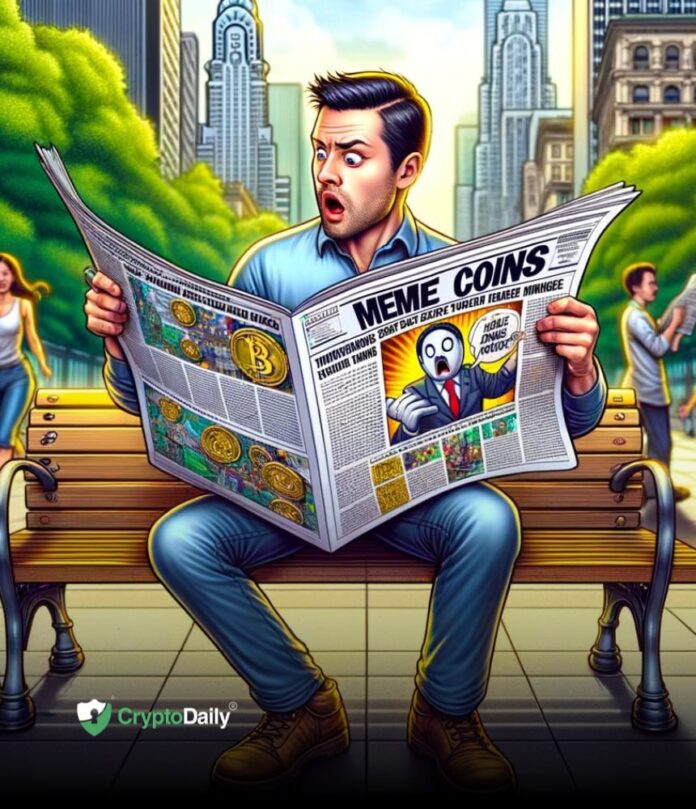All eyes have been on the Bitcoin ETFs and what it means for mainstream adoption, but in the shadows of large institutions stepping in, lies the true foundation of cryptocurrencies and one of the pillars of decentralization – communities.
A world far removed from what most white collar “crypto-connoisseurs” are accustomed to – but one that is set to dominate, and redefine the narrative for what we know about the evolution of finance and tech.
Crypto communities are groups of individuals passionate about various aspects of cryptocurrency, from NFTs, DeFi, to protocols. These communities play a crucial role in sharing knowledge, building awareness, and contributing to the technical aspects. Operating predominantly through online forums and social media, these communities are committed to spreading awareness and education on certain tokens. Surprisingly, one of the strongest communities emerge through memecoins.Unlike conventional digital currencies, which typically emphasise technological innovation or practical utility, memecoins are based on internet memes and online virality. They attract investors and derive their value from community sentiment and their entertaining nature.
Picture this: during every bull run, a notable “underdog” memecoin steals the spotlight, reaching a market cap worth billions of dollars, while injecting a bit of fun into the serious world of investing. It’s a reminder of the incredible influence a tight-knit community can have, showing that a collective sense of humour can resonate even with a typical investor.
Dogecoin and Shiba Inu
Dogecoin was introduced in December 2013, and quickly developed its own online community. It currently sits at a market capitalization of roughly US $12 billion. Shiba Inu, another memecoin, created in August 2020 by an anonymous person or group, sits at US $5.5 billion.
The reason for their success? Rock solid communities. In fact, the $DOGE community was so strong, particularly on X, that it attracted the attention of Elon Musk, further propelling the inflationary currency to the spotlight.
What started off as a deliberate regression from the scarcity model of Bitcoin, turned into an internet sensation (almost) overnight with over 6 million wallets holding $DOGE.
But despite the fun and games, both tokens share a mission and vision that goes beyond the jokes.
Due to Dogecoin’s lower unit price, its popularity, and quick transaction speeds, the open source peer-to-peer cryptocurrency is suitable for daily transactions.
Shiba Inu, an Ethereum-based cryptocurrency, aims to grow its ecosystem by bringing value to the SHIB token, while embracing the concept of governance, allowing investors to participate in decision-making processes through decentralized autonomous organizations (DAOs).
Pepe The Frog
With DOGE and SHIB sitting at the top at a relatively stable position (at least for the crypto assets), investors were eager for a new 1000x kid on the block. And amidst the longest crypto bear market yet, in April 2023, PEPE took centre stage. With several high profile figures and influencers buying in, all eyes were on the new memecoin.
“Pepe The Frog” – an insanely popular webcomic character and Internet meme created by cartoonist Matt Furie was designed as a green anthropomorphic frog with a humanoid body, originating in Furie’s 2005 comic, Boy’s Club. The only “attributable” feature of the coin was that a small percentage of coins would get burned with each transaction, meaning it was deflationary in nature. Retail investors flocked in by the thousands, forming a community of hundreds of thousands of members.
Its listing on Binance, one of the largest cryptocurrency exchanges in the world, sent the coin on a 7000% rally in May 2023. But the power of community came through before its downfall. Pepe began to gather critics around the world not long after its first taste of success. Large investors in Pepe, known as whales, ran the show during its rally, with the top 15 holders in 2023 holding over 9% of the total supply. One liquidation could send the whole system spiralling, taking the community down with it – and it did.
It was alleged in September of 2023, that three ex-team members had accessed the project’s multisig wallet without the consent of others and absconded with an astounding 16 trillion PEPE tokens, valued at $15m USD at the time, further lowering morale in the community. The rogue founders’ actions not only lowered morale, but increased suspicion within the community of a potential “rug pull”, which caused the Pepe markets to decline by 30% at the time.
$PEPE v $PORK: What the Fork?
Enter PORK – an ecosystem created in early 2024 by a furious group of investors in Pepe, seeking justice for the community. They managed to grow the community organically, by word of mouth, during the Pepe fallout.
PORK was designed as a divergence of Pepe, built on a fork of the Pepe coin (hence the name “pork”). The community grew across social platforms to hundreds of thousands of members within 48 hours, shooting the market cap of PORK to over $400 million USD. With 25,000 holders of $PORK currently on-chain, this serves as a powerful reminder of just how effective a community can be when it unites. While PORK’s chart was an upward tick, PEPE’s was simultaneously declining with investors claiming to move funds from one memecoin to another in support of the underlying cause.
If we ever needed a reminder of just how powerful and quick to act crypto communities can be, the Pepe versus Pork saga is one for the books.
Back to the founding principles of decentralisation: a step in the right direction
The fundamentals of crypto always come back to the community. Where would we be without the iconic forum introducing Bitcoin all those years ago? Crypto is by the people, and for the people. Memecoins are a good reminder of this and are even starting to evolve to prove more valuable to their investors. Coins that started off as jokes have progressed with continuous developments and incorporations of games and staking pools to cement the cohesion of their dedicated communities.
It’s easy to forget that cryptocurrencies were brought about to rectify the imbalances between institutional and retail investors; and whether good or bad, one could argue that narrative has shifted to institutional adoption and regulatory framework. But there’s something to be said about going back to basics. While memecoins are laughable in a sense – when done correctly, they will always serve as an excellent reminder of how the principles of decentralisation should, and could be acted upon.
Disclaimer: This article is provided for informational purposes only. It is not offered or intended to be used as legal, tax, investment, financial, or other advice.
Credit: Source link






















 Bitcoin
Bitcoin  Ethereum
Ethereum  XRP
XRP  Tether
Tether  Solana
Solana  USDC
USDC  Dogecoin
Dogecoin  Cardano
Cardano  Lido Staked Ether
Lido Staked Ether  TRON
TRON  Wrapped Bitcoin
Wrapped Bitcoin  Wrapped stETH
Wrapped stETH  Chainlink
Chainlink  Avalanche
Avalanche  Sui
Sui  Stellar
Stellar  Litecoin
Litecoin  Toncoin
Toncoin  Shiba Inu
Shiba Inu  Hedera
Hedera  LEO Token
LEO Token  MANTRA
MANTRA  USDS
USDS  Hyperliquid
Hyperliquid  Polkadot
Polkadot  WETH
WETH  Bitcoin Cash
Bitcoin Cash  Bitget Token
Bitget Token  Ethena USDe
Ethena USDe  Wrapped eETH
Wrapped eETH  Uniswap
Uniswap  Monero
Monero  NEAR Protocol
NEAR Protocol  Pepe
Pepe  WhiteBIT Coin
WhiteBIT Coin  Aave
Aave  Bittensor
Bittensor  Ondo
Ondo  Aptos
Aptos  Internet Computer
Internet Computer  Dai
Dai  Official Trump
Official Trump  Ethereum Classic
Ethereum Classic  Mantle
Mantle  Tokenize Xchange
Tokenize Xchange  Gate
Gate  OKB
OKB  sUSDS
sUSDS  Coinbase Wrapped BTC
Coinbase Wrapped BTC 
